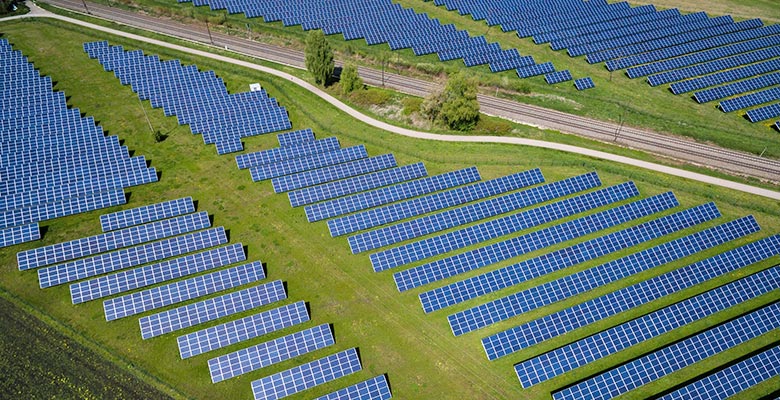
Starting with the release of the previous five-year plan, the Chinese government has continually re-articulated its commitment to cleaner energy.
The 2011 five-year plan envisioned a China much less dependent upon fossil fuels and more reliant upon nuclear, solar, and wind energy; it sought to diminish “greenhouse gas” emissions to mitigate the unprecedented levels of air pollution that has plagued many of its cities. Now, five years later, the g new five-year plan sets similarly ambitious targets. The release of the new plan highlights that China’s greentech industry has come a long way, but also that there still is a long road ahead.
China now invests more in clean energy than any other country in the world, and has made important strides in its green tech industry. Since 2011, solar and wind power have become far more prevalent throughout the economy. In 2015 alone, China doubled its capacity for solar energy by adding 15 GW to its grid system. That same year, their hydropower capacity reached 319 million GW, making it the largest hydropower system in the world. Initially, nuclear production remained relatively stagnant, as the country struggled to meet its benchmarks. However, it has since made headwinds: though nuclear power accounted for only 2% of China’s energy production in 2015, the country began adding reactors at a faster rate than any other nation in the world, according to the MIT review. The recent five-year plan furthers China’s commitment to developing these energy sources, setting a 2020 target rate for wind power twice as high as the 2011he one in the previous plan; the benchmark for solar power is five times as high.
Such large-scale energy shifts will obviously require a great deal of investment, most of which will be paid for by the government. The vast majority of energy enterprises remain under state-ownership. Such a state-centric model limits the profitability of China’s energy market to foreign investors. In a 2016 report, the International Trade Administration characterized China’s flourishing power-industry as one of the most impenetrable markets for global investors and exporters. Strict regulation and price-controls from Beijing seem to favor locally developed projects and offer a troubling lack of transparency. Moreover, as some companies have experienced, the government can be somewhat unreliable in its contractual commitments, sometimes altering deals on short notice. EXAMPLE Nonetheless, the government has gradually opened the market to private investment over the previous few years. As market competition becomes increasingly fierce in the years to come, more opportunities for profitable investment may arise.
Despite China’s laudable gains and goals in clean energy, the environmental situation remains somewhat dire, particularly in regards to air pollution. Since 2011, the public has increasingly voiced concern over the poor air quality, and with good reason: according to the international NGO Greenpeace, 90% of Chinese cities currently contain levels of greenhouse gasses (carbon dioxide, sulfur dioxide, etc.) that exceed China’s own standards. In Beijing, China’s most heavily polluted major city, pollution improved marginally between 2011 and 2016, as the concentration of greenhouse gasses decreased from 99 to 81 parts per cubic meter. However, the current concentration levels remain far above the World Health Organization’s safety limit of 35 parts per cubic meter. In other words, air quality remains a serious public health concern moving forward.
A key component of this problem lies in China’s persistent reliance upon fossil fuels. Despite the aforementioned gains in clean energy, 73% of the energy used in mainland China in 2015 was generated via fossil fuels such as coal. Although China has moved to shut down some of its largest coal plants in 2016, coal remains the primary source of energy production. The Chinese government acknowledges the importance of rectifying this problem and has implemented tighter regulations and guidelines – some industry specific and some that pertain to the economy as a whole – in order to diminish pollution and fossil fuel reliance. The 13th five-year plan sets significant goals in these regards.
In the long-run, investment in clean energy and greentech would not only help improve the environment and pollution in China, but would generate economic benefits in general. Improvements in public health serve as an economic stimulus, as does minimizing negative externalities in the energy production process. Indeed, the World Wildlife Foundation estimates that the construction of an energy system that generated 80% of its power via renewable resources would save the country RMB 350 trillion by 2050. A more efficient economy and a cleaner environment are not necessarily mutually exclusive. Moving forward, the government in Beijing is taking serious measures to turn that vision into reality.
Read about our consulting services and our experience in the energy and environment sector.
The insights provided in this article are for general informational purposes only and do not constitute financial advice. We do not warrant the reliability, suitability, or correctness of the content. Readers are advised to conduct independent research and consult with a qualified financial advisor before making any investment decisions. Investing in financial markets carries risks, including the risk of loss of principal. Past performance does not guarantee future results.
The views expressed herein are those of the author(s) and do not necessarily reflect the company's official policy. We disclaim any liability for any loss or damage arising from the use of or reliance on this article or its content. ARC Group relies on reliable sources, data, and individuals for its analysis, but accuracy cannot be guaranteed. Forward-looking information is based on subjective judgments about the future and should be used cautiously. We cannot guarantee the fulfillment of forecasts and forward-looking estimates. Any investment decisions based on our information should be independently made by the investor.
Readers are encouraged to assess their financial situation, risk tolerance, and investment objectives before making any financial decisions, seeking professional advice as needed.



